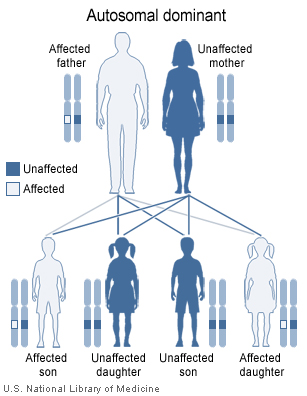Popliteal pterygium syndrome
Template:DiseaseDisorder infobox
Editor-In-Chief: C. Michael Gibson, M.S., M.D. [1]
Please Take Over This Page and Apply to be Editor-In-Chief for this topic: There can be one or more than one Editor-In-Chief. You may also apply to be an Associate Editor-In-Chief of one of the subtopics below. Please mail us [2] to indicate your interest in serving either as an Editor-In-Chief of the entire topic or as an Associate Editor-In-Chief for a subtopic. Please be sure to attach your CV and or biographical sketch.
Popliteal pterygium syndrome (PPS) is an inherited condition affecting the face, limbs, and genitalia. The syndrome goes by a number of names including the popliteal web syndrome and, more inclusively, the facio-genito-popliteal syndrome. The term PPS was coined by Gorlin et al. in 1968 on the basis of the most unusual anomaly, the popliteal pterygium (a web behind the knee). [1]
Clinical Features
Clinical expressions of PPS are highly variable, but include the following:[2][3]
- Limb findings: an extensive web running from behind the knee down to the heel (90%), malformed toenails, and webbed toes.
- Facial findings: cleft palate with or without cleft lip (75%), pits in the lower lip (40%), and fibrous bands in the mouth known as syngnathia (25%).
- Genital findings (50%): hypoplasia of the labia majora, malformation of the scrotum, and cryptorchidism.
Epidemiology
The diagnosis of PPS has been made in several ethnic groups, including Caucasian, Japanese, and sub-Saharan African. Males and females are equally likely to suffer from the syndrome. Since the disorder is very rare, its incidence rate is difficult to estimate, but is less than 1 in 10,000.[4]
Genetics

The genetic locus for PPS was localized to chromosome 1 in 1999. The disorder is inherited in an autosomal dominant manner and is due to mutation of the IRF6 gene. Most reported cases are sporadic; advanced parental age is found in a number of these cases, suggesting new mutations.
The term PPS has also been used for two rare autosomal recessively inherited conditions: Lethal PPS and PPS with Ectodermal Dysplasia. Although both conditions feature a cleft lip/palate, syngnathia, and popliteal pterygium, they are clinically distinguishable from the autosomal dominant case. Lethal PPS is differentiated by microcephaly, corneal aplasia, ectropion, bony fusions, hypoplastic nose, and absent thumbs, while PPS with Ectodermal Dysplasia is differentiated by woolly hair, brittle nails, ectodermal anomalies, and fissure of the sacral vertebrae.[5]
Relationship to Van der Woude syndrome
Van der Woude syndrome (VDWS) and popliteal pterygium syndrome (PPS) are allelic variants of the same condition; that is, they are caused by different mutations of the same gene. PPS includes all the features of VDWS, plus popliteal pterygium, syngnathia, distinct toe/nail abnormality, syndactyly, and genito-urinary malformations.[6]
References
- ↑ pediatrics
- ↑ medterms.com
- ↑ J Pediatr Orthop B 2004, 13:197-201.
- ↑ J Med Genet 1990; 27:320-6.
- ↑ Brit J Oral Maxillofacial Surg 1998; 36:138-40.
- ↑ Hong Kong Med J 2004; 10(5):331-6.
|
Cleft lip and palate Microchapters |
|
Diagnosis |
|---|
|
Treatment |
|
Case Studies |
|
Popliteal pterygium syndrome On the Web |
|
American Roentgen Ray Society Images of Popliteal pterygium syndrome |
|
Risk calculators and risk factors for Popliteal pterygium syndrome |